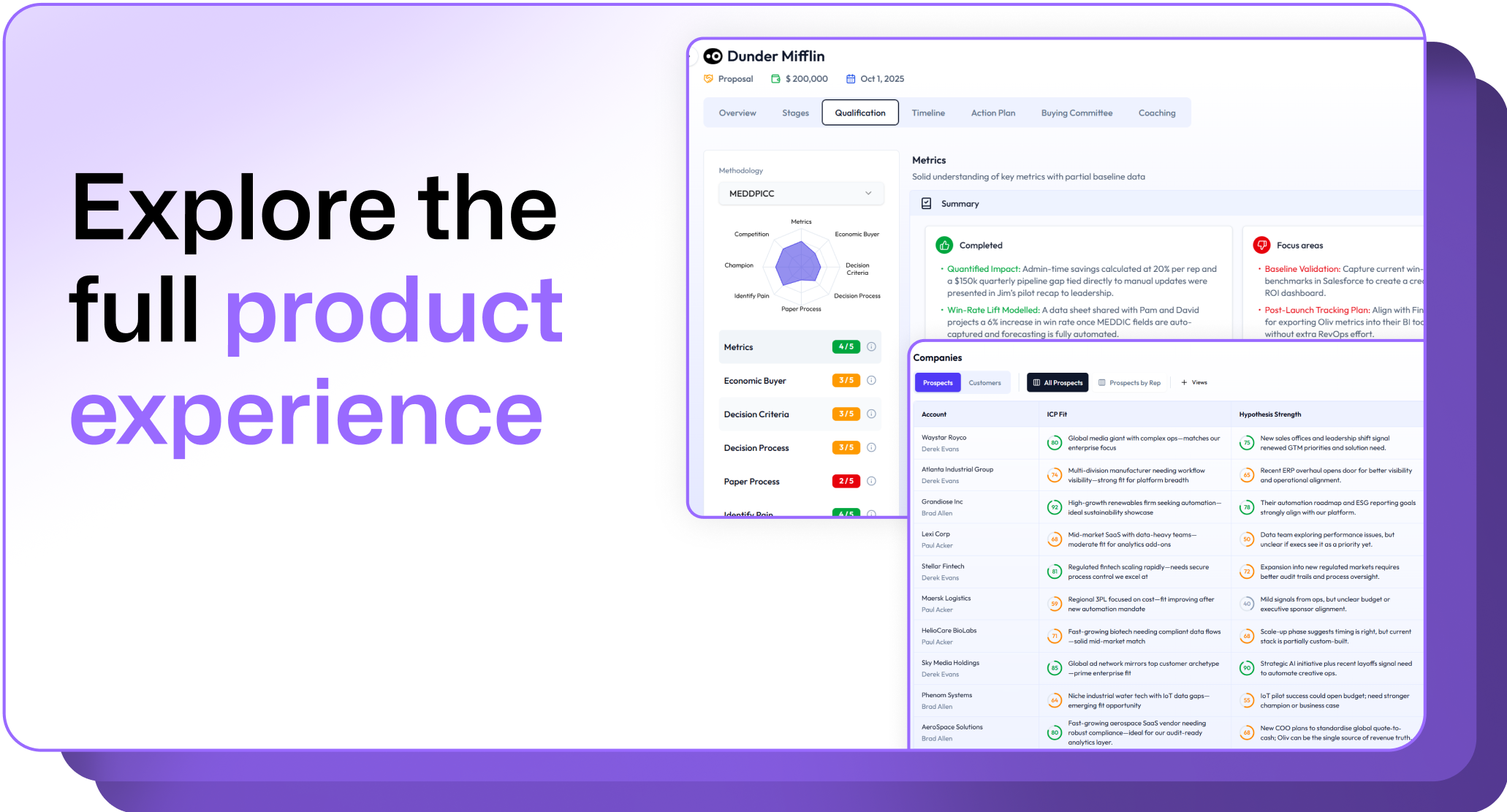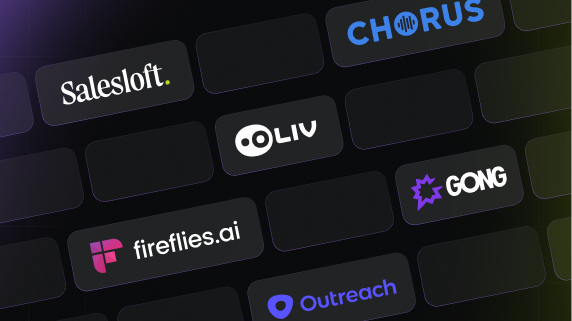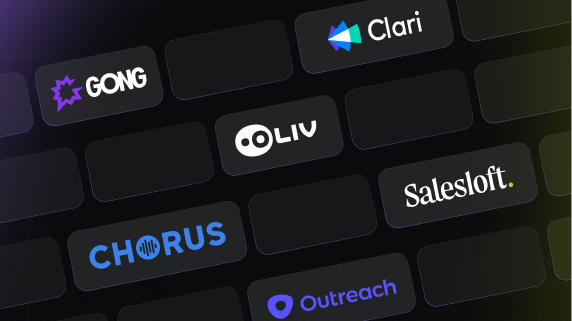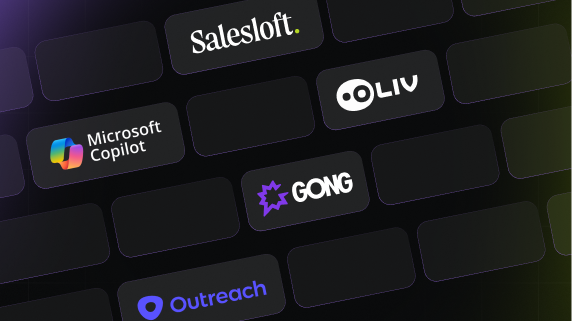Sales can be a rollercoaster- some months are great, others not so much. When things are going well, it is easy to become complacent, but did you know that even companies with 'okay' sales numbers lose 10% to 30% of their customers annually?
Thus, even if your team is meeting sales those targets, you can never get too comfortable because one sales objection is all it takes to set you back. It becomes highly imperative to always be on top of your prospects and targets.
Without proper sales cycle goals, teams can underperform compared to their true capabilities. This is where the power of SMART goals comes in, turning that untapped potential into real, measurable results. Today, we will look at a few SMART sales goals examples, but first things first: What are these SMART goals we keep talking about?
Understanding SMART goals
Think of the SMART acronym as your roadmap to creating sales management goals that actually lead to success. Let us break down each letter and see how these achievable sales goals help avoid common pitfalls:
Specific
Setting vague SMART sales goals is like driving without a destination; being specific forces you to define clearly what you want to achieve and how you will know when you have reached it. This eliminates confusion and ensures everyone on your team works towards the same, well-defined outcome.
- Bad sales goal example: Increase sales revenue
- SMART sales goals example: Increase total sales revenue by 15% in the next quarter compared to the same quarter of last year.
Measurable
If you cannot measure sales goals, how will you know if you are succeeding? Including numbers in your sales target makes your progress crystal clear. You can track wins, spot early warning signs if things are off track, and celebrate those milestones along the way.
- Bad goal example: Get more leads
- SMART sales goals example: Increase the number of qualified leads by 20% this month through specific targeted sales email campaigns.
Achievable
Aiming for the stars is great, but setting an impossibly high sales target sets your team up for discouragement and failure. SMART goals strike a balance between being ambitious and grounded in reality. This motivates your sales team because they believe success is within their reach with focused effort.
- Bad sales goal example: Double our revenue this year (when growth has been slow)
- SMART sales goals example: Increase revenue by 15% this year based on historical data and new market opportunities.
Relevant
It is easy to get caught up in chasing vanity metrics. Successful sales goals ensure your team's hard work directly contributes to the company's larger mission. Every goal should have a clear 'why' behind it, keeping everyone focused on what truly drives growth for your business.
- Bad sales goal example: Boost website traffic (if website traffic does not directly lead to sales)
- SMART sales goals example: Increase conversion rate on the website's landing page by 10% this month.
Time-Bound
A goal without a deadline is just a wish. Adding a time element creates a sense of urgency, motivates action, and helps you stay accountable. Time-bound goals also make reviewing progress easier and adjusting your strategies as needed.
- Bad sales goal example: Improve customer satisfaction
- SMART sales goals examples: Reduce customer churn rate by 5% within the next six months.
SMART sales goals examples are proven to take the guesswork out of sales success, keeping your team motivated and on track.
10 SMART sales goals examples
Setting SMART sales goals gives your team the focus, clarity, and accountability to crush targets and exceed expectations. Let us dive into some SMART sales goals examples to inspire your goal-setting strategy:
1. Number of outbound calls made per day or week
We all know those days when the phone feels heavy. Realistic sales goals like this keep reps motivated to push through the call reluctance and maximize their potential for generating new leads, the lifeblood of any sales team.
Example: Each rep makes at least 50 outbound calls per day.
2. Number of demos or meetings booked
Demos are a sign that your outreach is resonating with potential customers. Setting a goal here ensures your reps are not just filling their calendars with casual chats but are actively qualifying and moving serious prospects toward a sale.
However, tracking demo numbers manually can be tedious and prone to error. With Oliv’s auto-updated CRM, reps always have a real-time view of their demo performance. This allows them to celebrate wins quickly, identify any dips that need addressing, and ultimately stay focused on the actions that drive the most successful outcomes.
Example: Increase demo bookings by 15% this month through a targeted email campaign.
3. Proposal submission rate
This is one of the most important SMART sales goals examples. Each proposal represents both time invested and a potential deal in the making. A low proposal submission rate might signal a need to revisit your pricing, qualify leads more strictly, or refine your sales pitch.
Example: Double the number of proposals sent out within the next quarter.
4. Email response rate/time
Picture a hot lead reaching out, ready to learn more about your brand's offering. A delayed response can make them feel ignored and might send them looking elsewhere. According to Backlinko, the average cold sales email response rate is only 8.5%.
With this goal, your reps understand the importance of being quick on their feet and striking while the iron is hot.
Example: Respond to all new leads within 1 hour during business days.
5. Pipeline stage conversion rates
Think of your sales pipeline as a multi-step process. Tracking how smoothly leads move from one stage to the next reveals where your process might be hitting snags. This lets you fine-tune it for maximum efficiency.
Example: Aim to convert 30% of demos into the proposal stage by the end of the quarter.
6. Increase outbound email open rates
In a crowded inbox, your subject line is everything. This is one of the SMART sales goals examples that challenge you to get creative, crafting subject lines that make prospects want to click 'open' instead of hitting 'delete'.
Example: Boost email open rates by 10% through A/B testing different subject lines.
7. Faster follow-up
Regularly following up with a lead shows you are serious about earning their business. Out of all SMART sales goals examples, this one is about finding the sweet spot between timely persistence and annoying pestering. It requires careful timing and personalized messaging, which can be a challenge for busy sales reps.
That’s where Oliv comes in! With Oliv, you can automate personalized follow-up emails based on specific triggers or time intervals. This ensures consistent follow-up without adding to your team’s workload.
Example: Send a follow-up email within 24 hours after a demo if no response is received.
8. Improve meeting show-up rates
A booked meeting that nobody attends is a frustrating waste of time. This goal is about ensuring your booking process is convenient for clients and that your meetings offer real value, making them less likely to be a no-show.
Example: Decrease meeting no-show rate by 5% through improved pre-meeting reminders.
9. Proposal follow-up success
Sending a proposal and then playing the waiting game is not a great strategy. This is one of those SMART sales goals examples that focuses on those post-proposal follow-ups that nudge the deal towards closing, addressing any client hesitation along the way.
Example: Increase proposal win rate by 10% using a triple-touch follow-up sequence.
10. Nurturing long-term leads
Not every lead is ready to sign on the dotted line immediately. This is one of the examples of sales goals that is about playing the long game, staying engaged with those 'not yet ready' prospects, so when the time is right, you are the first name they think of.
However, remembering the details of past conversations for multiple leads can feel impossible. This is where Oliv's AI-generated call summary comes to your rescue. Instead of starting every interaction feeling like you are meeting a prospect for the first time, Oliv provides a quick refresher on previous discussions. This lets you pick up where you left off, building genuine rapport instead of making the prospect feel like a stranger.
Example: Create an email nurture campaign that delivers valuable content to 'not yet ready' prospects.
5 strategies for implementing SMART sales goals examples
Now, we know multiple examples of sales goals, but setting great goals is just the beginning. Here is how to ensure those SMART sales goals examples translate into real success for your team:
1. Aligning individual and team goals
Sales can feel like an individual sport, but the best results come from teamwork. While personal goals keep reps accountable, ensure they also tie into overall team and company objectives. This way, everyone feels like they are working towards a shared, bigger purpose.
2. The role of incentives
Goals are great, but a little motivation goes a long way. Incentives do not have to be all about money. Public recognition, small prizes, or even a coveted "top performer" parking spot can make hitting those goals even sweeter. Think of incentives as the extra energy boost to keep your team striving for those wins.
3. Data-driven improvement
Setting goals blindly is a recipe for "meh" results. Analyze historical sales data, market trends, and even competitor strategies to set goals that are both ambitious and grounded in reality.
Regularly review performance against goals, tweaking your approach along the way. Consider data your course-correction tool- it keeps you from sailing off into uncharted territory.
4. The feedback loop
You might have SMART sales goals examples right in front of you, but remember, goal-setting shouldn't be a set-it-and-forget-it situation. Build regular check-ins with your team, both individually and as a group, to track sales performance.
Discuss what is working, what is not, and any adjustments needed. Oliv's real-time progress tracking and dashboards make these check-ins meaningful, providing data-driven insights to guide your discussions.
5. Skill-focused goals
Beyond revenue targets, consider setting goals focused on skill development. This could include improving objection handling, mastering a new product demo, or becoming a social selling expert. Identify areas where reps need a boost and turn goal-setting into a targeted coaching opportunity.
Sales goals matter, but goal-setting is more than just a one-and-done task. SMART goals examples for sales might help you chalk out a plan, but it is still an ongoing process of motivation, analysis, and tweaking your approach to ensure your sales team is consistently successful.
Conclusion
Following SMART sales goals examples is the first step towards achieving extraordinary results. Let us recap the key takeaways from our discussion today:
- Goals without specific targets and deadlines lead nowhere fast.
- Track your progress with numbers and KPIs to stay motivated.
- Ensure your goals directly contribute to your larger business objectives.
- Do not set goals blindly. Use data to make them realistic and impactful.
- The sales landscape is always changing. Regularly review your goals and adjust as needed.
Ready to see how SMART goals examples for sales can transform your sales team's success?
Discover how Oliv can streamline your goal-setting process, provide real-time support to your reps, and help you easily track sales goals. Request your free Oliv demo today and start achieving your most ambitious sales goals.
















